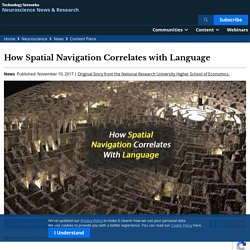

Selfie deaths: 259 people reported dead seeking the perfect picture. Image copyright Getty Images The quest for extreme selfies killed 259 people between 2011 and 2017, a 2018 global study has revealed.

Researchers at the US National Library of Medicine recommend that 'no selfie zones' should be introduced at dangerous spots to reduce deaths. These would include the tops of mountains, tall buildings and lakes, where many of the deaths occurred. Drowning, transport accidents and falling were found to be the most common cause of death. But death by animals, electrocution, fire and firearms also appeared frequently in reports from around the world. In July this year, 19-year-old Gavin Zimmerman fell to his death while taking selfies on a cliff in New South Wales, Australia.
Tomer Frankfurter died in California's Yosemite National Park in September after falling 250 metres while trying to take a selfie. News reports like this were analysed to compile the study. Attacked by Donald Trump — a PEOPLE Writer's Story. Manage Push Notifications If you have opted in for our browser push notifications, and you would like to opt-out, please refer to the following instructions depending on your device and browser.

For turning notifications on or off on Google Chrome and Android click here, for Firefox click here, for Safari click here and for Microsoft's Edge click here. Manage Push Notifications If you have opted in for our browser push notifications, and you would like to opt-out, please refer to the following instructions depending on your device and browser. For turning notifications on or off on Google Chrome and Android click here, for Firefox click here, for Safari click here and for Microsoft's Edge click here. Akiyoshi's illusion pages.
Akiyoshi's illusion pages.

Logic Puzzles. Memory in the Brain [Interactive] Although most people think of memory as a vault for storing information, it is more like a seamstress who stitches together logical threads into scenes that make sense.
![Memory in the Brain [Interactive]](http://cdn.pearltrees.com/s/pic/th/memory-the-brain-interactive-82305932)
In this view, a good memory is therefore not one that holds lots of data but that can deftly separate what is useful from what could distract or upset you. Getting rid of what is not necessary—forgetting—is thus an important part of memory and of thought. It is also critical to emotional wellbeing. Revisiting bad memories is hardly a formula for happiness, after all. (For more on memory and forgetting, see Scientific American Mind’s special report on memory in January/February 2012.) To learn more about memory and the power of forgetting, see the January 2012 Scientific American Mind. 50 Ways To Boost Your Brain Power. Michael Talbot Holographic Universe WorkShop.
Do we live in a computer simulation? In today’s New York Times, John Tierney discusses an argument by Nick Bostrom, director of the Future of Humanity Institute at the University of Oxford, that our existence could be nothing more than a computer simulation being run by posthumanists.

Dr. Bostrom assumes that technological advances could produce a computer with more processing power than all the brains in the world, and that advanced humans, or “posthumans,” could run “ancestor simulations” of their evolutionary history by creating virtual worlds inhabited by virtual people with fully developed virtual nervous systems. Some computer experts have projected, based on trends in processing power, that we will have such a computer by the middle of this century, but it doesn’t matter for Dr. Bostrom’s argument whether it takes 50 years or 5 million years. The article includes links to four others related to Bostrom’s argument, and there’s a lengthy discussion going on at the TierneyLab blog.
One Day on Earth: A film shot in every country in the world on a single day... This trailer is the first glimpse of One Day on Earth, an ambitious motion picture shot by thousands of filmmakers in every country in the world on a single day: October 10, 2010.

The trailer alone includes footage from 90 individuals and organizations. The producer/director Kyle Ruddick is currently editing down 3,000 hours of film and is asking for help via Kickstarter to complete the project. I don’t know about you but it gave me chills. Daylight Savings Time: History and How to Adjust to it – American Sleep Association. 8 Things Everybody Ought to Know About Concentrating. “Music helps me concentrate,” Mike said to me glancing briefly over his shoulder.

Mike was in his room writing a paper for his U.S. History class. On his desk next to his computer sat crunched Red Bulls, empty Gatorade bottles, some extra pocket change and scattered pieces of paper. The New Map Of The Brain. Trying to map the brain has always been cartography for fools.

Most of the other parts of the body reveal their workings with little more than a glance. The heart is self-evidently a pump; the lungs are clearly bellows. But the brain, which does more than any organ, reveals least of all. The 3-lb. lump of wrinkled tissue--with no moving parts, no joints or valves--not only serves as the motherboard for all the body's other systems but also is the seat of your mind, your thoughts, your sense that you exist at all. Hypnagogia and Hypnopompia. Hypnagogia is the imagery, sounds and strange bodily feelings that are felt at “sleep onset.”

This is a simplification though, as researchers have noted hypnagogic imagery in the lab at periods of quiet wakefulness as well as stage 1 sleep. Others have correlated hypnagogia with pre-sleep alpha waves and also REM intrusion into sleep onset. The truth is that the wake-sleep transition is still not understood. How Spatial Navigation Correlates with Language. Cognitive neuroscientists from the Higher School of Economics and Aarhus University experimentally demonstrate how spatial navigation impacts language comprehension.

The results of the study have been published in NeuroImage. Language is a complicated cognitive function, which is performed not only by local brain modules, but by a distributed network of cortical generators. The human brain can create structures in up to 11 dimensions. Neuroscientists have used a classic branch of maths in a totally new way to peer into the structure of our brains. What they've discovered is that the brain is full of multi-dimensional geometrical structures operating in as many as 11 dimensions.
We're used to thinking of the world from a 3-D perspective, so this may sound a bit tricky, but the results of this new study could be the next major step in understanding the fabric of the human brain - the most complex structure we know of. This latest brain model was produced by a team of researchers from the Blue Brain Project, a Swiss research initiative devoted to building a supercomputer-powered reconstruction of the human brain. The team used algebraic topology, a branch of mathematics used to describe the properties of objects and spaces regardless of how they change shape. "We found a world that we had never imagined," says lead researcher, neuroscientist Henry Markram from the EPFL institute in Switzerland.
Sinister Minds: Are Left-Handed People Smarter? Cesare Lombroso, the father of modern criminology, owes his career to a human skull. Melatonin Side Effects – American Sleep Association. Looksees. Expressions of Interest. PHOTO OPS. Remind Us. Room for Interpretation. Viva la Earthbound. Delta. FUN STUFF. Roundabout.
Portals. Art of hosting.